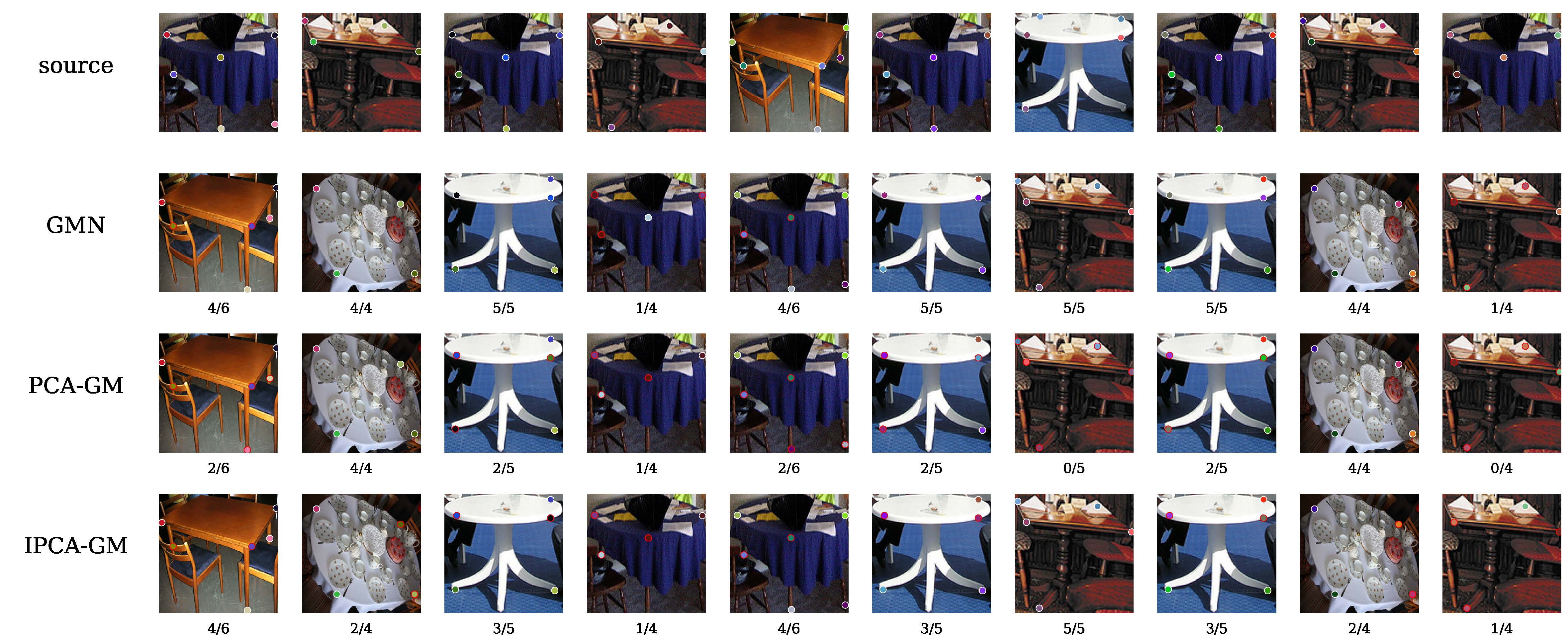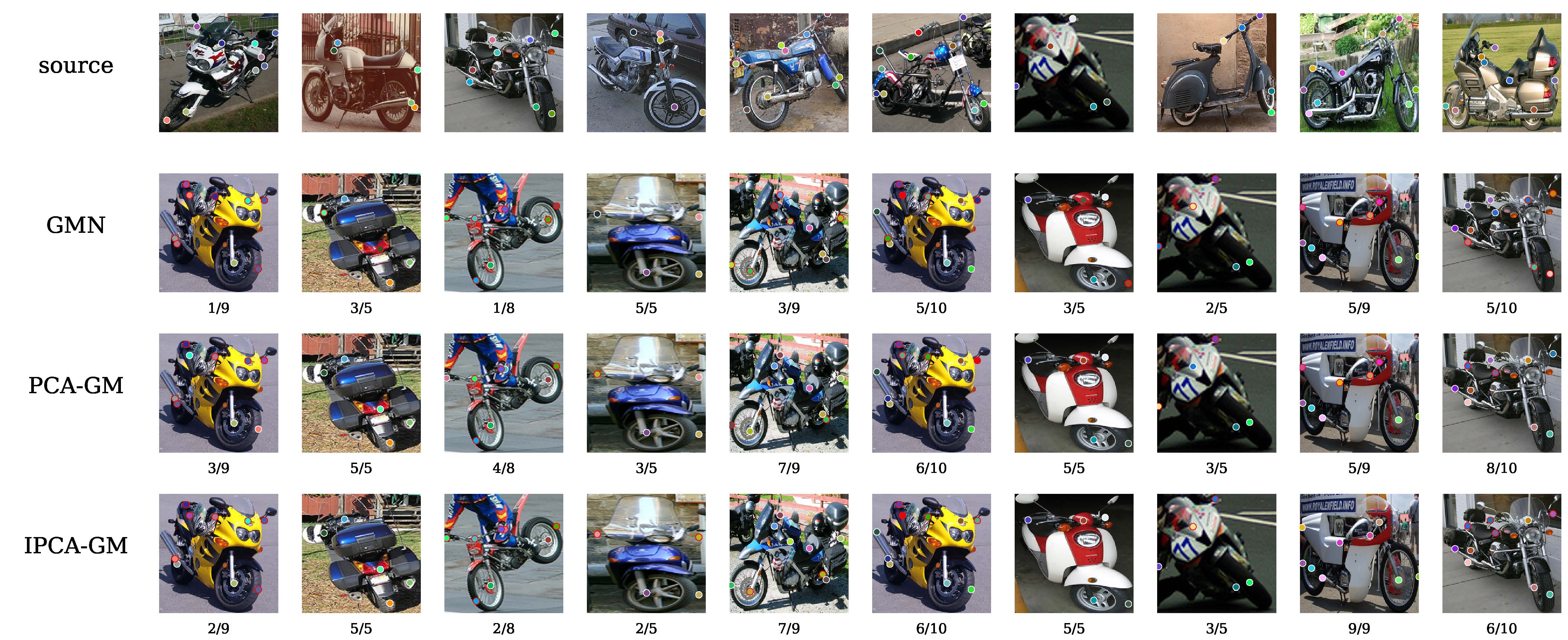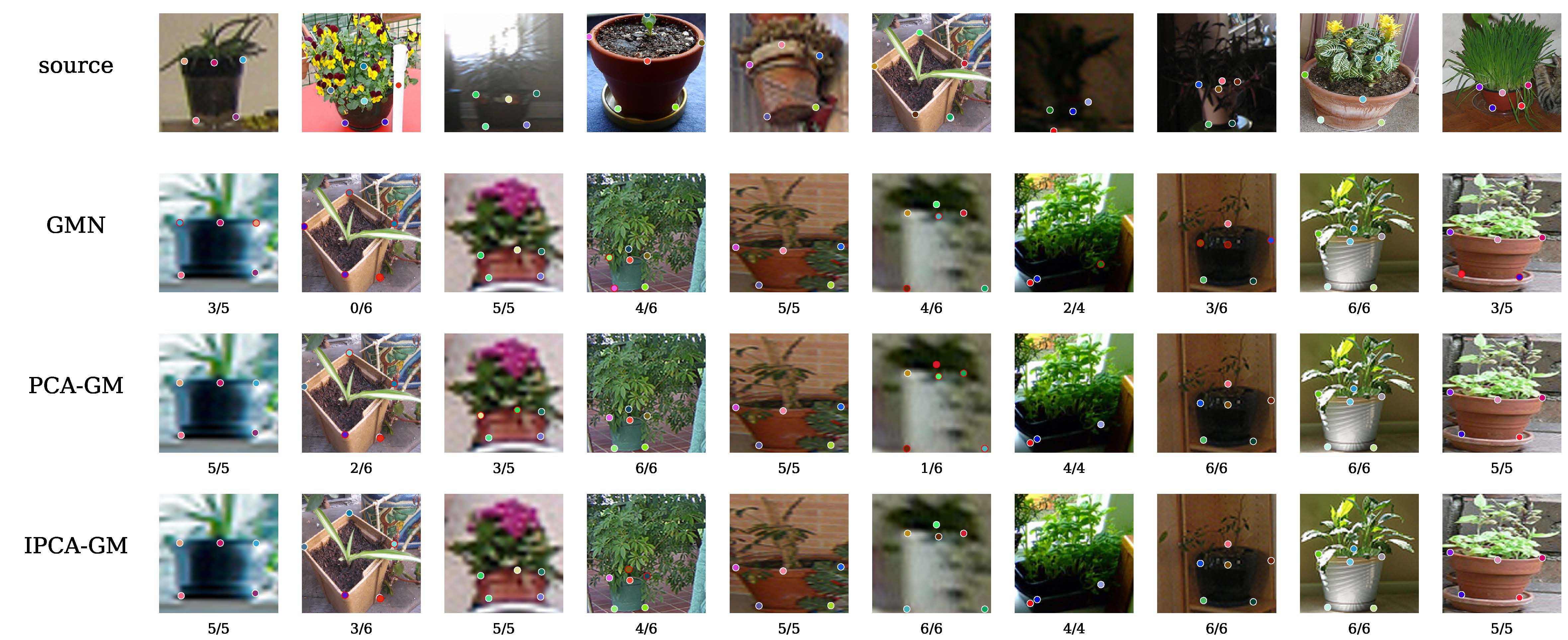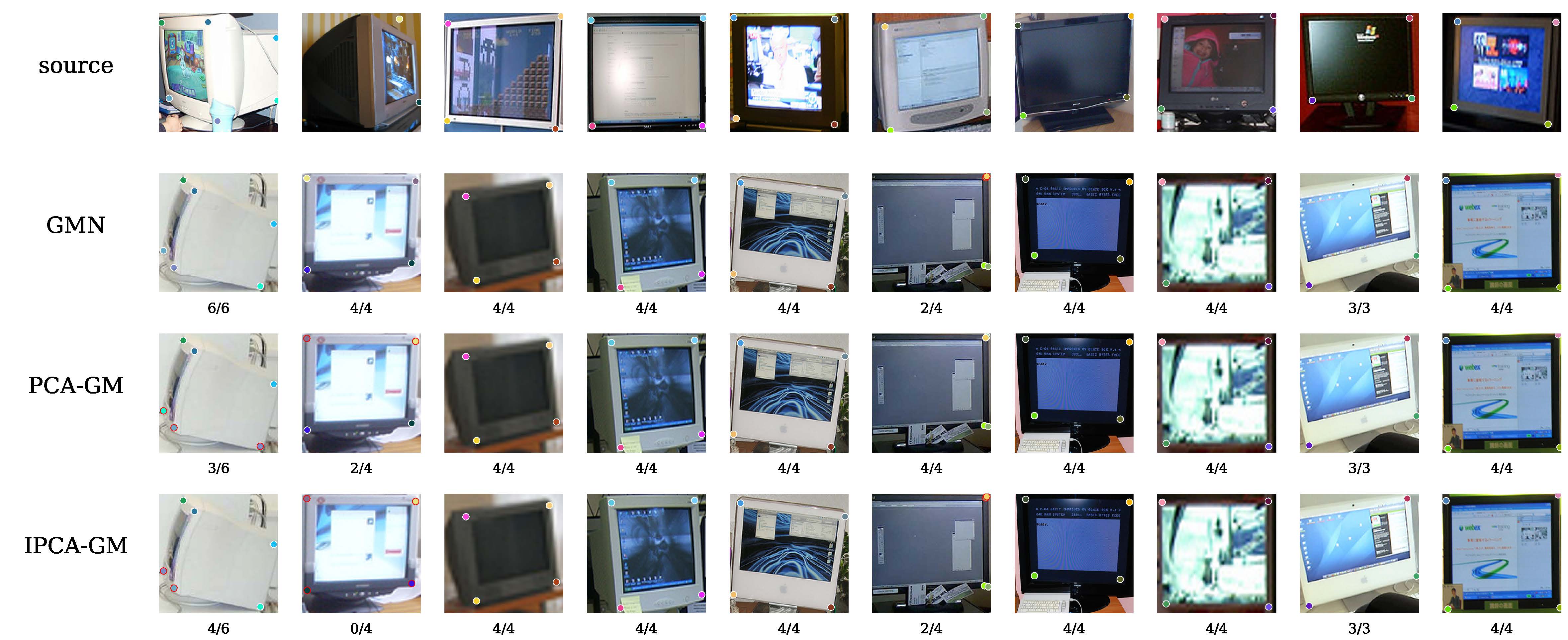- Runzhong Wang, Shanghai Jiao Tong University, China
- Junchi Yan (corresponding author), Shanghai Jiao Tong University, China
- Xiaokang Yang, Shanghai Jiao Tong University, China
This project page includes code & additional result on our ICCV & PAMI papers.
Abstract
Graph matching aims to establish node correspondence between two graphs, which has been a fundamental problem for its NP-complete nature. One practical consideration is the effective modeling of the affinity function in the presence of noise, such that the mathematically optimal matching result is also physically meaningful. This paper resorts to deep neural networks to learn the node and edge feature, as well as the affinity model for graph matching in an end-to-end fashion. The learning is supervised by combinatorial permutation loss over nodes. Specifically, the parameters belong to convolutional neural networks for image feature extraction, graph neural networks for node embedding that convert the structural (beyond second-order) information into node-wise features that leads to a linear assignment problem, as well as the affinity kernel between two graphs. Our approach enjoys flexibility in that the permutation loss is agnostic to the number of nodes, and the embedding model is shared among nodes such that the network can deal with varying numbers of nodes for both training and inference. Moreover, our network is class-agnostic. Experimental results on extensive benchmarks show its state-of-the-art performance. It bears some generalization capability across categories and datasets, and is capable for robust matching against outliers.
Experimental result on Pascal VOC Keypoint dataset without outliers:
| Method | aero | bike | bird | boat | bottle | bus | car | cat | chair | cow | table | dog | horse | mbike | person | plant | sheep | sofa | train | tv | mean |
|---|---|---|---|---|---|---|---|---|---|---|---|---|---|---|---|---|---|---|---|---|---|
| GMN | 31.9 | 47.2 | 51.9 | 40.8 | 68.7 | 72.2 | 53.6 | 52.8 | 34.6 | 48.6 | 72.3 | 47.7 | 54.8 | 51.0 | 38.6 | 75.1 | 49.5 | 45.0 | 83.0 | 86.3 | 55.3 |
| GMN-PL | 31.1 | 46.2 | 58.2 | 45.9 | 70.6 | 76.4 | 61.2 | 61.7 | 35.5 | 53.7 | 58.9 | 57.5 | 56.9 | 49.3 | 34.1 | 77.5 | 57.1 | 53.6 | 83.2 | 88.6 | 57.9 |
| PIA-GM | 41.5 | 55.8 | 60.9 | 51.9 | 75.0 | 75.8 | 59.6 | 65.2 | 33.3 | 65.9 | 62.8 | 62.7 | 67.7 | 62.1 | 42.9 | 80.2 | 64.3 | 59.5 | 82.7 | 90.1 | 63.0 |
| PCA-GM | 51.2 | 61.3 | 61.6 | 58.4 | 78.8 | 73.9 | 68.5 | 71.1 | 40.1 | 63.3 | 45.1 | 64.4 | 66.4 | 62.2 | 45.1 | 79.1 | 68.4 | 60.0 | 80.3 | 91.9 | 64.6 |
| IPCA-GM | 51.0 | 64.9 | 68.4 | 60.5 | 80.2 | 74.7 | 71.0 | 73.5 | 42.2 | 68.5 | 48.9 | 69.3 | 67.6 | 64.8 | 48.6 | 84.2 | 69.8 | 62.0 | 79.3 | 89.3 | 66.9 |
Experimental result on Pascal VOC Keypoint dataset with outliers:
| Method | aero | bike | bird | boat | bottle | bus | car | cat | chair | cow | table | dog | horse | mbike | person | plant | sheep | sofa | train | tv | mean |
|---|---|---|---|---|---|---|---|---|---|---|---|---|---|---|---|---|---|---|---|---|---|
| GMN | 34.2 | 55.0 | 46.4 | 39.6 | 77.0 | 60.5 | 46.9 | 54.5 | 31.7 | 51.0 | 48.0 | 48.0 | 48.5 | 50.8 | 28.8 | 73.8 | 49.8 | 38.3 | 69.4 | 83.9 | 51.8 |
| GMN-PL | 38.9 | 56.1 | 47.9 | 41.0 | 79.1 | 66.5 | 49.0 | 57.9 | 33.7 | 54.4 | 43.7 | 49.5 | 53.5 | 55.4 | 31.2 | 76.6 | 53.0 | 37.8 | 71.3 | 86.4 | 54.1 |
| PIA-GM | 43.8 | 60.6 | 51.5 | 43.5 | 75.4 | 70.6 | 58.9 | 62.0 | 35.3 | 54.4 | 44.3 | 57.1 | 56.1 | 58.6 | 40.0 | 76.5 | 60.1 | 36.5 | 76.1 | 86.3 | 57.4 |
| PCA-GM | 44.6 | 63.6 | 53.7 | 45.9 | 78.0 | 69.5 | 52.7 | 63.1 | 37.6 | 56.4 | 44.4 | 58.3 | 56.2 | 57.5 | 39.0 | 80.1 | 59.6 | 40.2 | 69.4 | 87.1 | 57.8 |
| IPCA-GM | 44.5 | 63.9 | 54.6 | 47.6 | 79.9 | 69.8 | 54.7 | 64.4 | 37.9 | 59.4 | 55.6 | 57.5 | 57.5 | 57.4 | 40.2 | 80.1 | 60.0 | 41.2 | 71.4 | 86.9 | 59.2 |



















